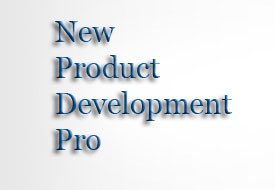keys to change

Create a Clear Vision
Create a clear vision that helps people understand and keep focused on needed changes.
Clearly Demonstrate Top Management Support
Create opportunities for top management to demonstrate support through their involvement, decisions, and actions.
Empower One or More Champions to Manage the Change Process
Designate and empower a person or team to manage the change process and champion the needed changes.
Communicate, Communicate, Communicate
Use various methods and opportunities to communicate with those who can influence and are impacted by the changes, keep them informed about progress and successes, and listen to and respond to their concerns.
Strategic Involvement
Involvement in understanding and influencing the change process breaks down resistance and increases ownership for the success of needed changes. Use creative approaches to efficiently involve the right people at the right time.
Use Data to Drive Change
Relevant internal or external data collected from surveys, interviews, research, or site visits to discover best practices can provide a strong incentive for change and overcome resistance to change.
Education and Training
Education and training are often necessary to unfreeze old ways of thinking and acting, learn new ways, and overcome fears of not having the skills to adapt to the desired changes.
Reward and Showcase Successes or Efforts to Change
Tangible rewards that reinforce change and recognition for successes or bold efforts to make needed changes increases the incentive for change. How management treats efforts that do not succeed may send equally strong messages.
Provide the Resources to Drive Change
Directing resources towards needed changes provides an incentive for change.
Acknowledge and Prepare for the Stress of Change
It is sometimes helpful to acknowledge that change can be stressful, to prepare people for the highs and lows of the change process, and to provide training in how to manage the stress of significant change.
Pilot Projects
Smaller pilot projects are less risky and will often stimulate interest in larger scale projects.
Be Sensitive to Time and Action Requirements
Some resistance comes from new demands on already busy schedules. Make meetings count, utilize Change Champions and Action Teams as much as possible to accomplish change.
Take a Positive Approach to Change
Negative approaches that seek change through coercion, force, manipulation, placing blame, or looking for scapegoats increase resistance to change. Attack problems and not people and create positive reasons and opportunities for change.
Confront the Resistance
It is usually best to get resistance out into the open and confront it in a constructive and direct way. Resisters won over often become Change Champions. Even if they continue to resist, the issues will be clear.
Know When to Bite the Bullet
Sometimes change needs to be made even though many of the alternatives mentioned above are not possible or did not work. There are times when people either need to join the changes or move aside. |


